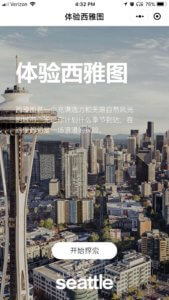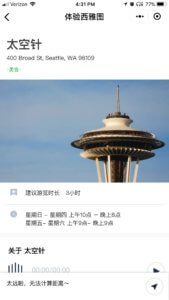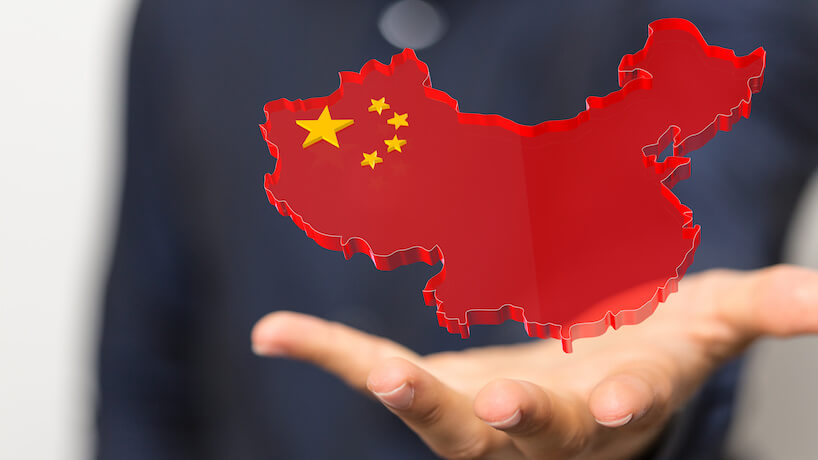Over the past three years, leaders in the business events industry have been making big moves in one of the world’s biggest economies: China. Marriott unveiled a partnership with the country’s largest e-commerce company, Alipay. Delta invested $450 million in one of the country’s leading airlines, China Eastern. Even PCMA has been involved in the rush, acquiring ICESAP and hosting its first-ever event in China. All the action reflects the growing importance of appealing to Chinese travelers, an audience that is projected to grow at an annual rate of 8 percent through 2027.
John Boesche, vice president of international tourism at Visit Seattle, has seen the impact of the early stages of that growth. Seattle’s location has already played a valuable role in the city’s global success — conventions in the Emerald City attract an average international audience of 19 percent. But the past two years have included a large uptick in Mandarin-speaking travelers and attendees, in particular. Between 2016 and 2017, Chinese visitors to Seattle increased by 18 percent. “It’s been incredible,” Boesche told PCMA. “We’ll surpass the 200,000 mark of Chinese visitors to Seattle this year. It’s a substantial piece of business for our destination.”
With nonstop flights from Beijing, Shanghai, Shenzhen, and Hong Kong, Seattle is easy to get to for Chinese visitors. However, reaching potential leisure travelers and convention attendees requires an understanding of China’s highly regulated environment. “It’s so radically different than any other market we’re in,” Boesche said. “The need to be digital and social is essential for reaching this audience. The traditional tactics that work in Europe are simply not going to work China.”
Becoming Fluent in WeChat
 Embracing that digital mindset requires mastering a mobile tool that won’t be found on most Americans’ smartphones: WeChat. With more than one billion monthly active users, WeChat is used by approximately 70 percent of the Chinese population. “Calling WeChat a social-media channel is selling it short,” Boesche said. “It’s really like combining Facebook, Twitter, Venmo, OpenTable, Yelp, and every other mobile tool under one umbrella. People are using it to do everything from buying cars to booking long-haul air travel to paying for meals at mom-and-pop restaurants.”
Embracing that digital mindset requires mastering a mobile tool that won’t be found on most Americans’ smartphones: WeChat. With more than one billion monthly active users, WeChat is used by approximately 70 percent of the Chinese population. “Calling WeChat a social-media channel is selling it short,” Boesche said. “It’s really like combining Facebook, Twitter, Venmo, OpenTable, Yelp, and every other mobile tool under one umbrella. People are using it to do everything from buying cars to booking long-haul air travel to paying for meals at mom-and-pop restaurants.”
Now, Boesche and Visit Seattle are giving WeChat users one more activity to add to their lists: the opportunity to explore Seattle with the DMO’s new WeChat CityExperience Mini Program, a modern city guide with recommendations and maps in written and audible Mandarin. The pilot program, which launched on April 10, features more than 130 of Visit Seattle’s partners. Seattle is the second U.S. city to launch such a tool — Washington, D.C. has also launched a similar program. Boesche believes it puts Seattle on “the front end of a trend where we’ll see more U.S. companies explore WeChat opportunities in 2018.”
In addition to the CityExperience tool, Visit Seattle’s in-market representation in China — a requirement for opening an ‘official’ account — is regularly engaging with potential visitors on the platform. However, posting on WeChat isn’t as simple as answering the “What’s happening?” question that greets Twitter users.
“Looking at WeChat, we have to be significantly more forward-thinking than we might be on Facebook or Twitter where we’re responding to visitors in real-time,” Boesche said. “Because of the type of account we have, we are limited to posting four times each month. Our posts are much more robust, blog-like types of content. We also have to be mindful of longer booking windows and travel patterns with international travelers.”
Enhancing the Attendee Experience
 Boesche and Visit Seattle also must think about conference-registration cycles. With visa applications and early-bird discounts, prospective Chinese attendees are thinking about their trips well in advance. The CityExperience Mini Program provides a powerful marketing tool for capturing their interest, but Boesche believes that Visit Seattle’s WeChat presence will be a difference-maker once those attendees arrive at Seattle-Tacoma International Airport’s international terminal. That’s where they’ll see highly visible QR codes.
Boesche and Visit Seattle also must think about conference-registration cycles. With visa applications and early-bird discounts, prospective Chinese attendees are thinking about their trips well in advance. The CityExperience Mini Program provides a powerful marketing tool for capturing their interest, but Boesche believes that Visit Seattle’s WeChat presence will be a difference-maker once those attendees arrive at Seattle-Tacoma International Airport’s international terminal. That’s where they’ll see highly visible QR codes.
“WeChat is very much based on QR codes,” Boesche said. “As Americans, we might think that feels somewhat old-school, but the functionality of QR codes will play a significant role in capturing the attention of guests and convention attendees.
“For example, consider a Chinese convention attendee checking into their headquarter hotel in Seattle,” Boesche continued. “We’ll use hotel key-card inserts, window clings, and a diverse set of physical assets to make sure that the attendee recognizes that this program is available for them. And for event organizers, the beauty of that kind of visibility is that there is no need to create additional collateral.”
While Boesche is excited to watch the initial results of the program, he’s focused on refining the tool and leveraging WeChat’s constantly growing number of bells and whistles.
“What we hope to see is that, as we get closer to 2019, there is going to become even more flexible functionality that will allow us to create customized messaging around specific conventions,” Boesche said. “Perhaps it’s a simple way to specialize badge-type discounts for groups. Tencent (WeChat’s parent company) and WeChat are developing so quickly that it’s not a matter of if that kind of benefit will be available, but a matter of when. The versatility of the platform is keeping us on our toes and we’re constantly growing and trying to keep up.”

